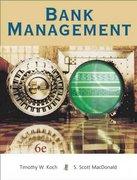Question
If protective importrestricting tariffs are imposed by acountry, in the majority of cases thatnation's producers end up A. receiving a higher price for the good
If protective
importrestricting
tariffs are imposed by acountry, in the majority of cases thatnation's producers end up
A.
receiving a higher price for the good than they otherwise would.
B.
receiving a lower price for the good than they otherwise would.
C.
producing less of the good than they otherwise would.
D.
receiving a lower profit for the domestic good than they otherwise would.
A legal limit on the amount of sugar imported into the United States is
A.
a tariff.
B.
a voluntary import restriction.
C.
a quota.
D.
a subsidy.
The successor organization to GATT that handles trade disputes among its member nations is the
A.
European Union.
B.
North American Free Trade Agreement.
C.
World Trade Organization.
D.
General Agreement on Tariffs and Trade.
To avoid traderestrictions, a U.S. firm moves its final production process to Ireland and then ships the final products to the United Kingdom.
This is an example of
A.
trade deflection.
B.
rules of origin.
C.
protectionism.
D.
trade diversion.
Acountry's balance of payments shows a
A.
detailed record of the import and export of services for the country.
B.
summary record of acountry's economic transactions with foreign residents and governments over a year.
C.
summary record of international financial assistance received by the country.
D.
detailed record of thecountry's imports.
Anation's balance of payments can be affected by
A.
per capita GDP relative to othernations' per capita GDP.
B.
thecountry's population increases relative to othernations' populations.
C.
thecountry's inflation rate relative to othernations' inflation rates.
D.
none of the above.
Current account transactions are all payments that are related to the purchase or sale of
A.
services only.
B.
goods and services excluding government purchases.
C.
goods only.
D.
goods and services only.
When the balance of trade is inbalance, we know with certainty that
A.
the value of capital exports equals the value of capital imports.
B.
the value of all debit transactions equals the value of all credit transactions.
C.
the value of exports of goods equals the value of imports of goods.
D.
the value of exports of goods and services equals the value of imports of goods and services.
The foreign exchange market is
A.
a market in whichhouseholds, firms, and governments buy and sell national currencies.
B.
the decrease in the exchange value of onenation's currency in terms of another nation.
C.
a market in which exchange rates are allowed to fluctuate in the open market in response to changes in supply and demand.
D.
the increase in the exchange value of onenation's currency in terms of an other nation.
Changes in which of the following will cause a change in exchangerates?
A.
real interest rates
B.
consumer preferences
C.
perceptions of economic and political stability
D.
all of the above
Assume that$1 equals 100 yen
().
A Japanese visitor to the United States wants to pay her$100 hotel bill.
How many yen should she exchange in order to have enough dollars to pay thebill?
A.
1,000
B.
0.01
C.
10,000
D.
10
An appreciation of anation's currency is
A.
the increase in the exchange value of onenation's currency in terms of an other nation.
B.
a situation in which exchange rates are allowed to fluctuate in the open market in response to changes in supply and demand.
C.
the decrease in the exchange value of onenation's currency in terms of another nation.
D.
a nation in whichhouseholds, firms, and governments buy and sell national currencies.
If interest rates in Sweden go up relative to the rest of theworld, the
A.
demand for Swedish currency will rise.
B.
demand for Swedish currency will fall.
C.
supply of Swedish currency will rise.
D.
supply of Swedish currency will fall.
Under a pure goldstandard,
A.
all currencies are defined in terms of gold and these rates are fixed.
B.
all foreign exchanges involve gold for goods and services.
C.
the dollar is tied to gold and all other currencies are fixed relative to the dollar.
D.
all trade involves government agencies.
The legally established value of acountry's monetary unit in terms of another under the Bretton Woods system was called the
A.
dirty float.
B.
exchange rate.
C.
special draw.
D.
par value.
The foreign exchange system that has the highest foreign exchange risk is
A.
the Bretton Woods system.
B.
the fixed exchange rate.
C.
the floating exchange rate.
D.
the Gold Standard
A U.S. company wants to buy its televisions from a Chinese company. The Chinese company sells its TVs for1,200 yuan each. The current exchange rate between the U.S. dollar and the Chinese yuan is$1 = 6 yuan.
How many U.S. dollars will the U.S. company have to convert into yuan to pay for eachtelevision?
A.
$100
B.
$1,200
C.
$7,200
D.
$200
Step by Step Solution
There are 3 Steps involved in it
Step: 1

Get Instant Access to Expert-Tailored Solutions
See step-by-step solutions with expert insights and AI powered tools for academic success
Step: 2

Step: 3

Ace Your Homework with AI
Get the answers you need in no time with our AI-driven, step-by-step assistance
Get Started


